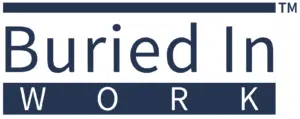Asuccessful planned giving program begins with a deep understanding of your community and the individuals who are most likely to support your organization through legacy gifts. By identifying the needs, values, and motivations of your donors, you can tailor your outreach and engagement strategies to resonate with them on a personal level. This page will guide you through the steps to better understand your community and how to leverage that knowledge to build stronger, more meaningful connections.
Conducting Demographic Research
Start by gathering demographic data on your current supporters and potential donors. Consider factors such as age, income level, family structure, and past giving behavior. This information can help you identify key segments within your community that may be more inclined to consider planned giving. Tools like surveys, donor databases, and public records can provide valuable insights into who your supporters are and what drives their philanthropy.
Identifying Donor Motivations
Understanding what motivates your donors is crucial to developing effective planned giving strategies. Some donors may be motivated by the desire to leave a lasting legacy, while others might be driven by financial or tax benefits. By engaging with your donors and listening to their stories, you can uncover the personal values and life experiences that inspire them to give. Use this knowledge to craft messages that speak directly to their motivations and aspirations.
Segmenting Your Donor Base
Not all donors are the same, and segmenting your donor base allows you to tailor your approach to different groups. For example, younger donors may be more interested in making a difference now through bequests or beneficiary designations, while older donors might be focused on securing income for their retirement through charitable gift annuities or remainder trusts. By segmenting your donor base, you can create more targeted communication and engagement strategies that resonate with each group.
Building Relationships with Key Donors
Once you’ve identified potential planned giving donors, focus on building and nurturing those relationships. This might involve personal meetings, phone calls, or invitations to special events where you can discuss your organization’s mission and how planned giving can support it. By investing time in these relationships, you can deepen the connection between your donors and your organization, increasing the likelihood of securing a planned gift.
Creating Personalized Outreach
Tailoring your outreach to the specific needs and interests of your donors is essential. Consider creating personalized communications, such as letters or emails that reflect each donor’s past involvement with your organization and how a planned gift could make a significant impact. Use the insights gained from your demographic research and donor segmentation to create messages that resonate on a personal level.
Engaging the Broader Community
While it’s important to focus on key donors, don’t overlook the broader community. Public events, educational workshops, and awareness campaigns can help you reach a wider audience and introduce more people to the concept of planned giving. These efforts can also generate interest and curiosity, leading potential donors to seek out more information about how they can contribute to your organization’s future.
Regularly Reassessing Your Community’s Needs
Your community’s needs and interests may change over time, so it’s important to regularly reassess and update your understanding of your donors. Conduct periodic surveys, host focus groups, and stay engaged with your community to ensure your planned giving program remains relevant and aligned with their values. This ongoing process will help you maintain strong relationships and adapt your strategies to meet evolving donor expectations.
Get Started Today
Ready to take the next step? Let us help you create a tailored planned giving strategy that aligns with your organization’s mission and goals.
Planning Guide Quick Links

